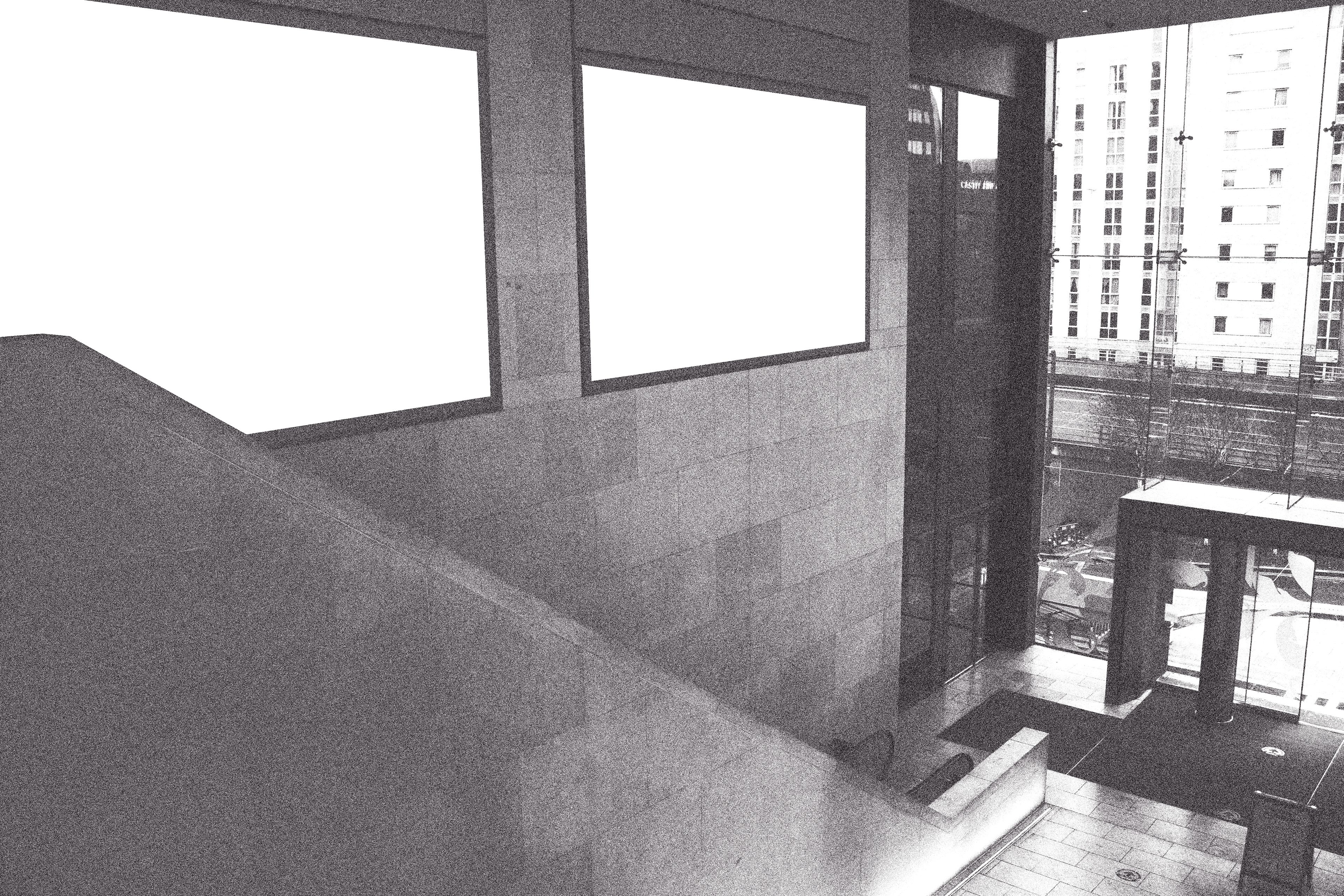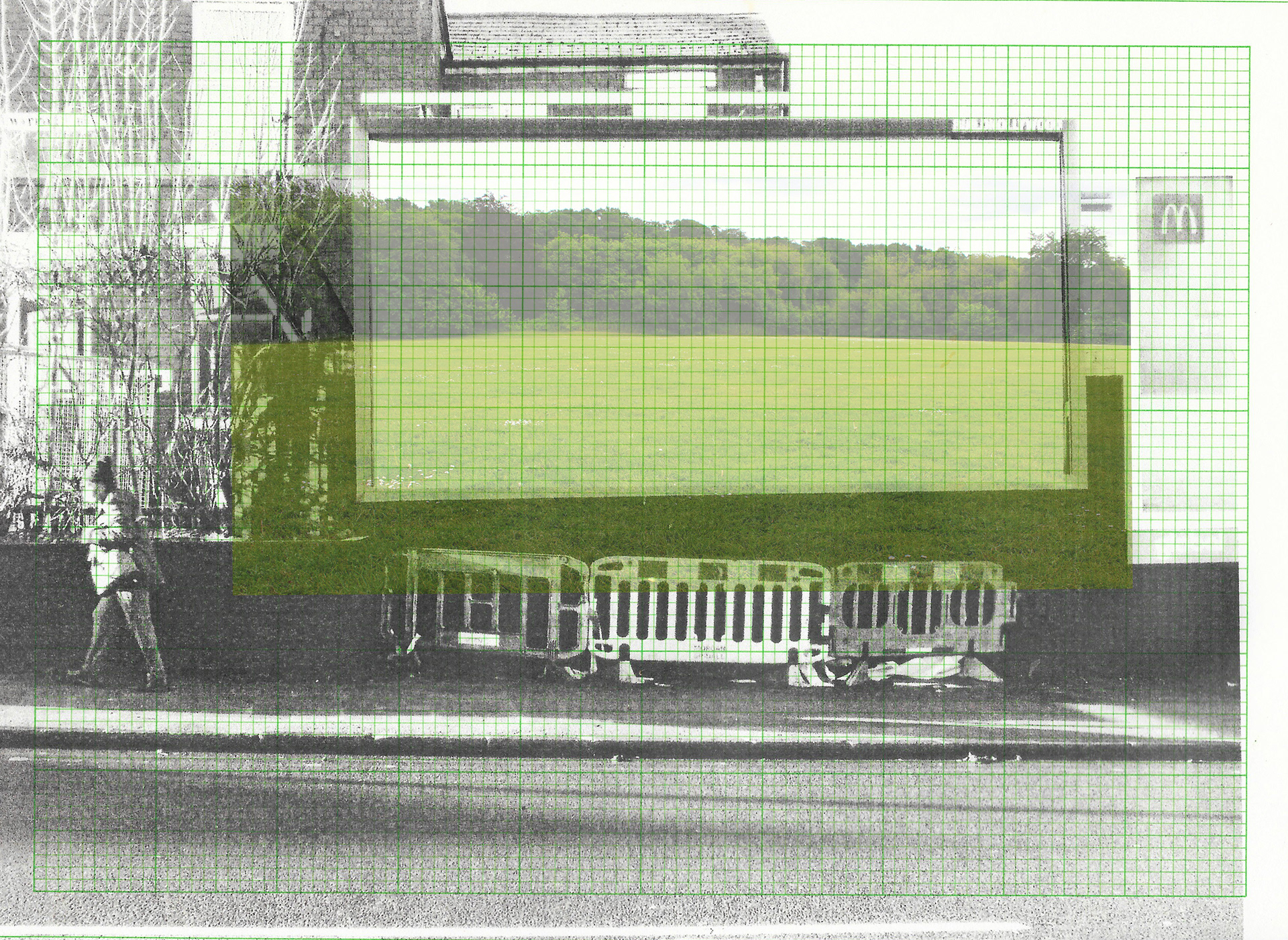Artist's Statement
This project began by revisiting photography I had previously taken during lockdown in March 2020, in particular of the Mailbox, in contrast to, Cotteridge high street. The images of Birmingham had already become archival as our country gradually unlocked and time ticked on. I began to be interested in the relationships these images had with time and place as well as their indication of how capitalism had created more inequality in the context of a pandemic. I began to juxtapose my images with video of my local park, Canon Hill Park, which had been a source of real solace to me over lockdown, as it had for many others I past everyday on my walk. I wanted to merge the failure of capitalism with the simple joy one finds in nature. I have always enjoyed science fiction and the odd reality of the past 18 months had seemed familiar to me, as though I had experienced all this before in dystopian book or film. I also felt nature was a good parallel theme to time, and nature reclaiming space is an idea synonymous with science fiction. The sky, the woods, the seasons can represent a timelessness. Over lockdown, many of us had felt a lack of control and changed perception of time. Speaking to people about their experiences, it seemed either there had been a phenomenology of too much time or an overwhelming feeling of not enough time, as people juggled home schooling and caring for isolated older relatives as well as working from home. Film seemed the most appropriate media for commenting on time as I could capture the audience’s gaze for a period of it.
Certain elements of nature I have captured, have an inevitability to their existence; the weeds, trees and streams will always flow in Canon Hill Park, as they have been for many years. I like to think Margaret Street too, the venue for my virtual exhibition, will be a haven for art development long into this century too. But the Mailbox’s future is less certain. It stands fairly empty now as we unlock, and there is a sense the old ways of spending on luxury items to identify the self are now existentially over, like a still image of the past. I have tried to capture the fragility of image and memory of the past through the thin, vintage paper I used for my exhibition guide, as well as the opaque, ghostly images on film. The ghosts of trees harvested during the 1980s are here with us in the 'room', through the paper of my publication, as well as the apparitions on screen. The ecologies of the materials combine with each other to create new images and meanings; the camera lens of the past with the printer in the present, the still image with the moving, the old mechanisms of a slideshow with the HD film, the imagined with the virtual; playing around with the idea of what is certain both now, in the past and in the future.
'Growth' has a ‘dual experience’; It can be entered as a documentation of my present work, or perceived ‘tongue in cheek’ as though you are a viewer of my work in 2047, looking back on the now (with the assumption that I am both alive and a successful artist in 26 years’ time). Just as science fiction offers us a vision of what may be, this exhibition, I hope, does that but also critiques what has been and what is, deterritorializing the viewer and the views we see in the images. I have used local viewpoints to hopefully create something that is vaguely familiar to my audience and yet new at the same time. The exhibition guide is a fiction; a programme for a non-existent event in the future. By using impossible dates (there is no 31st June 2047), I am suggesting the future is uncertain, as are archives themselves. We have no record of what the ground, the earth, the plants looked like where the Mailbox now stands from 500 years ago. We can imagine, but we will never know what we have done, what could have been in the space it occupies in alternative realities. What will the Mailbox look like in another 500 years? Another commercial development? Or maybe a ransacked ruin invaded by weeds and rivers. As Homay King says in ‘Virtual Memory’, “another world may not be possible. But another world is virtual". Whilst the virtual offers us limitless possibilities, there is also a danger in getting too lost in it, when our real world requires drastic change. I hope my work inspires people to move forwards away from capitalist and commercial systems, frames, and spaces, towards spaces of nature, freedom and the possibility of the collective imagination.
List of works




Selection of layered experimental images. Archival images, photocopies, paint.
'Why did we come here? What did we hope to find?' Film montage
'Sky Journey' Digital film.



Layered image experimentations. Digital layers and laser prints on vintage paper.
'Nature immersion'. Digital continuous film.
'Billboard door' (2047). Digital image in commercial frame.
'Mall forest' (2047). Layered print in commercial frame.
The exhibition guide for 'Growth' (2047) is printed on vintage paper manufactured in the 1980s.
Projection of 'Growth' (2047) in the exhibition space. 4m x 2.3m
NOTE: Please listen with headphones and in full screen mode for a more authentic experience.
'Growth' (2047) exhibition guide, front and back view.
Above: 'Growth' (2047) exhibition guide's content. Below: Text from inside.
"Birmingham School of Art, in association with the MA Art and Design programme, is pleased to welcome back alumni artist, Katherine Howes, for her first solo exhibition.
Growth (2047) is an exhibition featuring film and printed digital and photographic work depicting an imagined future/past where commercial spaces and frames collide with nature. Informed by the experience of the years of pandemic in the earlier part of our century, the artist, using archival images of Birmingham (taken in 2020), amalgamates the materiality of the past with digital images of local nature in the present.
The results explore imagined alternative realities. The exhibition raises questions about possible missed opportunities of rewilding during the climatic and economic warning crises of the early decades of the century as well as notions of how, inevitably, these spaces will be returned to mother nature.
Katherine Howes is A multimedia artist whose interests include juxtapositioning history with current issues and composing new & imagined narratives through image and FILM."